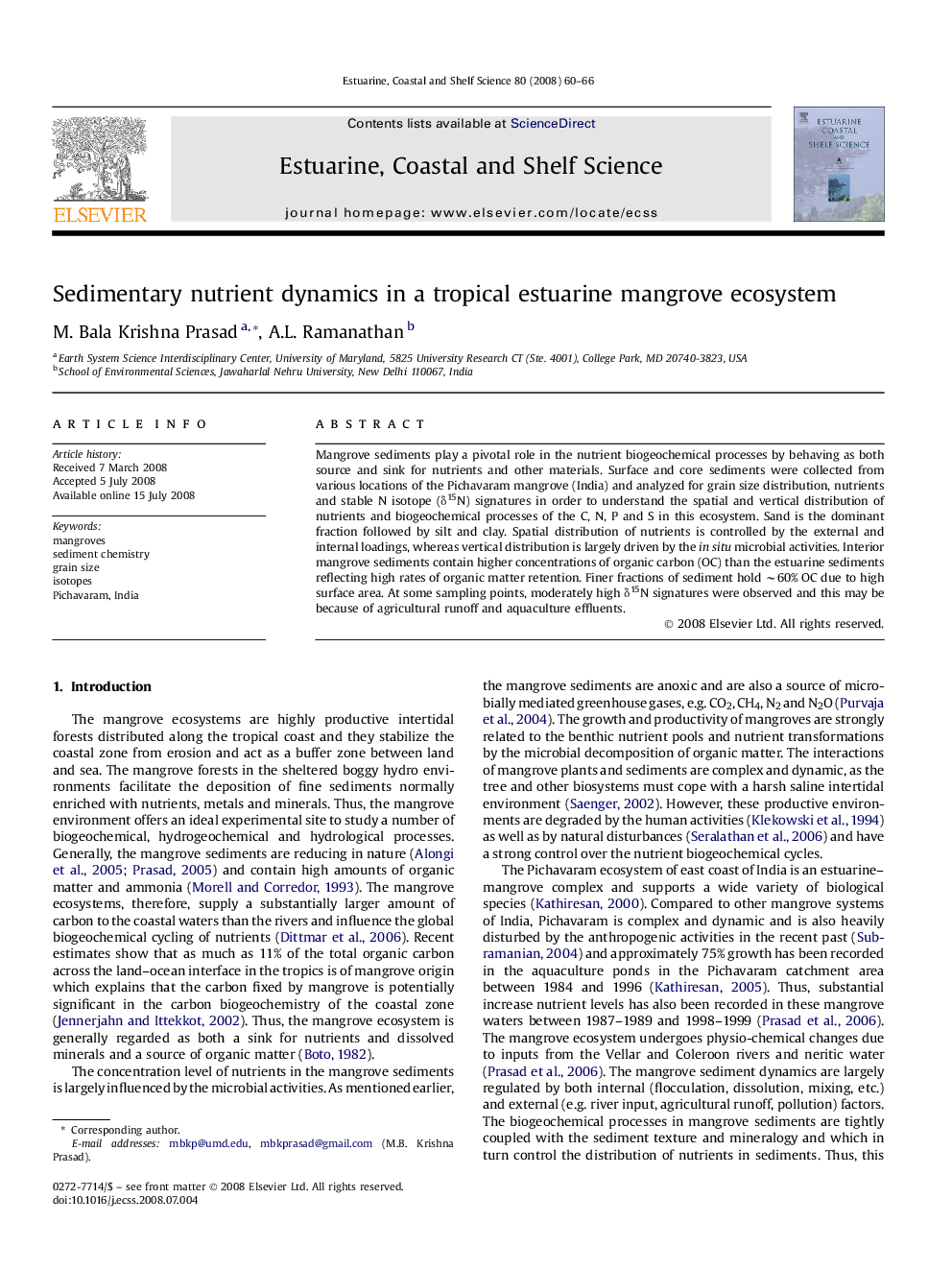| Article ID | Journal | Published Year | Pages | File Type |
|---|---|---|---|---|
| 4541429 | Estuarine, Coastal and Shelf Science | 2008 | 7 Pages |
Mangrove sediments play a pivotal role in the nutrient biogeochemical processes by behaving as both source and sink for nutrients and other materials. Surface and core sediments were collected from various locations of the Pichavaram mangrove (India) and analyzed for grain size distribution, nutrients and stable N isotope (δ15N) signatures in order to understand the spatial and vertical distribution of nutrients and biogeochemical processes of the C, N, P and S in this ecosystem. Sand is the dominant fraction followed by silt and clay. Spatial distribution of nutrients is controlled by the external and internal loadings, whereas vertical distribution is largely driven by the in situ microbial activities. Interior mangrove sediments contain higher concentrations of organic carbon (OC) than the estuarine sediments reflecting high rates of organic matter retention. Finer fractions of sediment hold ∼60% OC due to high surface area. At some sampling points, moderately high δ15N signatures were observed and this may be because of agricultural runoff and aquaculture effluents.
